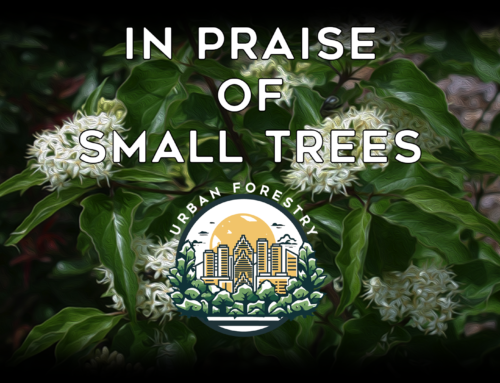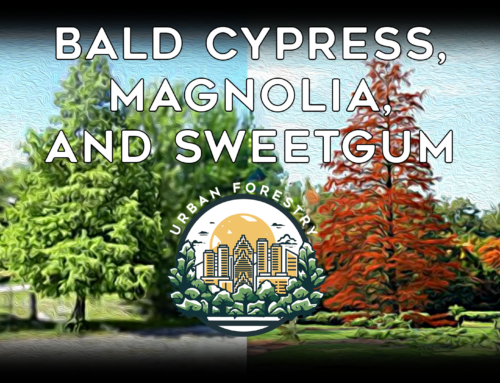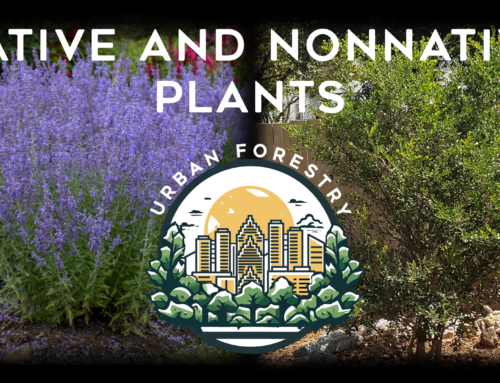This is the third in a series of very short articles pertaining to our Heights area trees and forest canopy. It is written simply and in lay terms and avoids Latin names and too much jargon. The author makes no claim to having great knowledge, just a lifetime of looking, growing, and studying trees.
In this short article I will attempt to give you a few Oak tree choices for our marvelous neighborhood. If a southerner you probably instantly see a large spreading live oak in your eye and if from the Texas Hill Country you see a small live oak or a pretty, but short Texas red oak. Texas has the largest number of Oak species, at 44 and 2 varieties, in the United States. All of these are a bit difficult to immediately classify. To illustrate let me relate a possibly apocryphal tale: 19th century Harvard professor Asa Gray reportedly asked each of his students to bring in an oak leaf and he would identify the species. Five students mischievously got leaves from the big oak tree outside the door. The professor then misidentified them to five different species of oak. This illustrates the difficulty of truly identifying the many numbers of species even by a trained professional. Likewise, I have seen and enjoyed many an incorrect identification via plant apps on phone and internet. One memorable example was of a small Green Ash which was mistaken for a Sawtooth Oak. So, to make this simpler for a homeowner seeking to add these mighty trees to our landscape I will resort to a bit of nonscientific simplifying.
Divide the Oaks into two families (technically there are five subgroups of oaks) mostly evergreen (Live and usually Water) and deciduous (Reds and White). Always keep in mind that all Oaks drop their leaves each year, but some stay green until leaves drop and some will color first, though in mild winters they might just brown and then hold the dead leaves until new growth. So far so good, but it begs the question of how to choose amongst this huge number of fine trees.
Now let us examine the area to see which are the most common. Live Oaks, Shumard Red Oaks, and Water Oaks. Fine choices which I, too, revere, but now are bit overplanted. Look closer at Houston parks, woods, and the Heights Boulevard Esplanade. Notice the Burr Oaks (very large leaves and marvelous acorns), Swamp Chestnut Oaks (Spade shaped leaves with nice fall color), and White Oaks (good fall color and light-colored bark). These are readily available at our locally owned nurseries and great additions to help diversify the landscape. Other excellent choices are the Texas Red or Spanish Oak which stays smaller (just know that another species – Nuttall Oak -is identified in Latin as Quercus Texana. Oaks are certainly confusing), and the Chinkapin Oak. These should also be available in local nurseries but might have to be ordered. I prefer local nurseries who are stocked from Texas or deep South wholesale suppliers. For trees I avoid big box and chain nurseries since much of their stock is from non-Texas adapted regions giving the trees a harder time. One very big issue is the Northern Pin Oak (not to be confused with the Water and the Willow Oaks which are sometimes called Pin Oak in Texas) masquerading as Shumard Oak. Both are very similar when young, but the Northern Pin Oak fails here inside of a decade turning yellow and brittle before death. A clue is how the Pin Oak’s lower limbs turn downwards even when grown fully spaced. Information overload? I apologize.
I will now list some oak choices to diversify our canopy:
- Burr Oak
- Swamp chestnut Oak
- White Oak
- Chinkapin Oak
- Texas Red, Buckley, or Spanish Oak (it enjoys many names)
- Other Red Oaks to consider are Cherry Bark (also called Pagoda) and Southern Red Oak
- That short list hardly touches the wonderful number of choices, yet I hope narrows it down to manageable numbers.
Currently, the key word is currently as the future is not guaranteed, Oak wilt is not a problem in Harris County. It has caused a huge loss of oaks in other regions of Texas, especially in the Hill Country. It affects all types of oaks and generally is spread late winter and spring. As wounds are the main way the beetles attack the trees be careful to avoid trimming oaks in this time especially if using cheap or untrained tree trimming companies who often do not sterilize their equipment. As always, seek out trained arborists who are reputable and care about the life of trees and not just making a fast buck.
Many potential tree planting homeowners are worried about the ultimate size of their oaks. Bear in mind that oaks can fill several functions in the forest. They can be the overstory tall and spreading. They might also be the understory remaining smaller and yet providing color, structure, and food for wildlife. In my personal woods I have several 30- to 40-year-old oaks (Cherry Bark, Burr, Water, and hybrid Texas/Shumard Red Oaks) that are less than 20 feet tall underneath larger oaks and pines. I also have a 70-foot-tall Water Oak I grew from an acorn in a spot allowing it to reach that majestic size. The Oak will fill the space it been given whether large or small within its inherent size limits. The best thought is to not put any Oak under a power line to avoid its constant need of topping, but otherwise to plant for the animals, birds, and health of the Urban Forest. One final thought is if you find Post Oak available plant it in a safe spot. That species has almost disappeared in our area due to its intolerance of construction and anyone tunneling through its root zone. A fantastic tree and once very common, but the modern Heights has seemingly declared war upon it. Perhaps now that smaller homes may be coming back into vogue and building slowing down due to lot saturation it can have a resurgence.


















